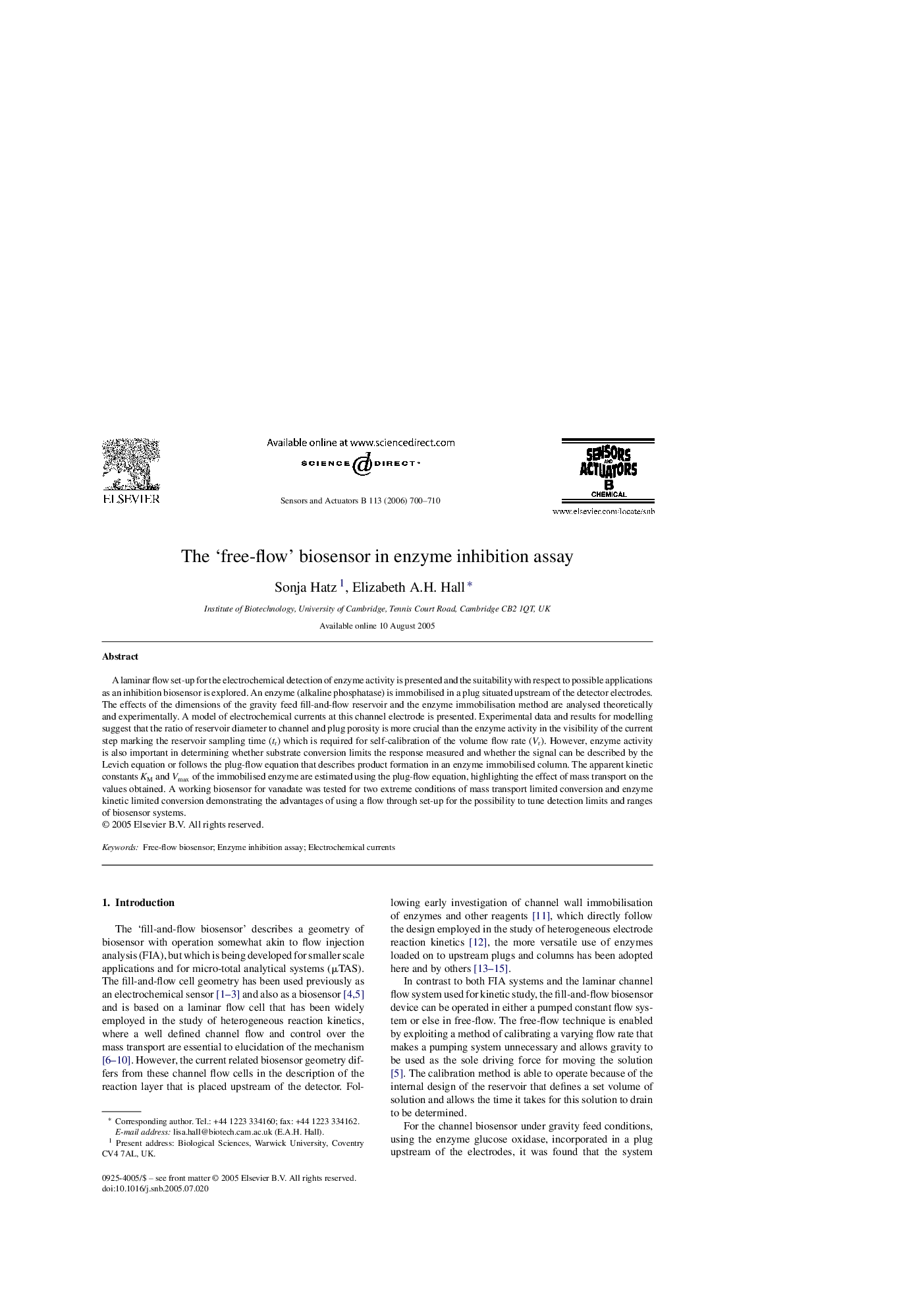| Article ID | Journal | Published Year | Pages | File Type |
|---|---|---|---|---|
| 746267 | Sensors and Actuators B: Chemical | 2006 | 11 Pages |
A laminar flow set-up for the electrochemical detection of enzyme activity is presented and the suitability with respect to possible applications as an inhibition biosensor is explored. An enzyme (alkaline phosphatase) is immobilised in a plug situated upstream of the detector electrodes. The effects of the dimensions of the gravity feed fill-and-flow reservoir and the enzyme immobilisation method are analysed theoretically and experimentally. A model of electrochemical currents at this channel electrode is presented. Experimental data and results for modelling suggest that the ratio of reservoir diameter to channel and plug porosity is more crucial than the enzyme activity in the visibility of the current step marking the reservoir sampling time (tr) which is required for self-calibration of the volume flow rate (Vr). However, enzyme activity is also important in determining whether substrate conversion limits the response measured and whether the signal can be described by the Levich equation or follows the plug-flow equation that describes product formation in an enzyme immobilised column. The apparent kinetic constants KM and Vmax of the immobilised enzyme are estimated using the plug-flow equation, highlighting the effect of mass transport on the values obtained. A working biosensor for vanadate was tested for two extreme conditions of mass transport limited conversion and enzyme kinetic limited conversion demonstrating the advantages of using a flow through set-up for the possibility to tune detection limits and ranges of biosensor systems.
